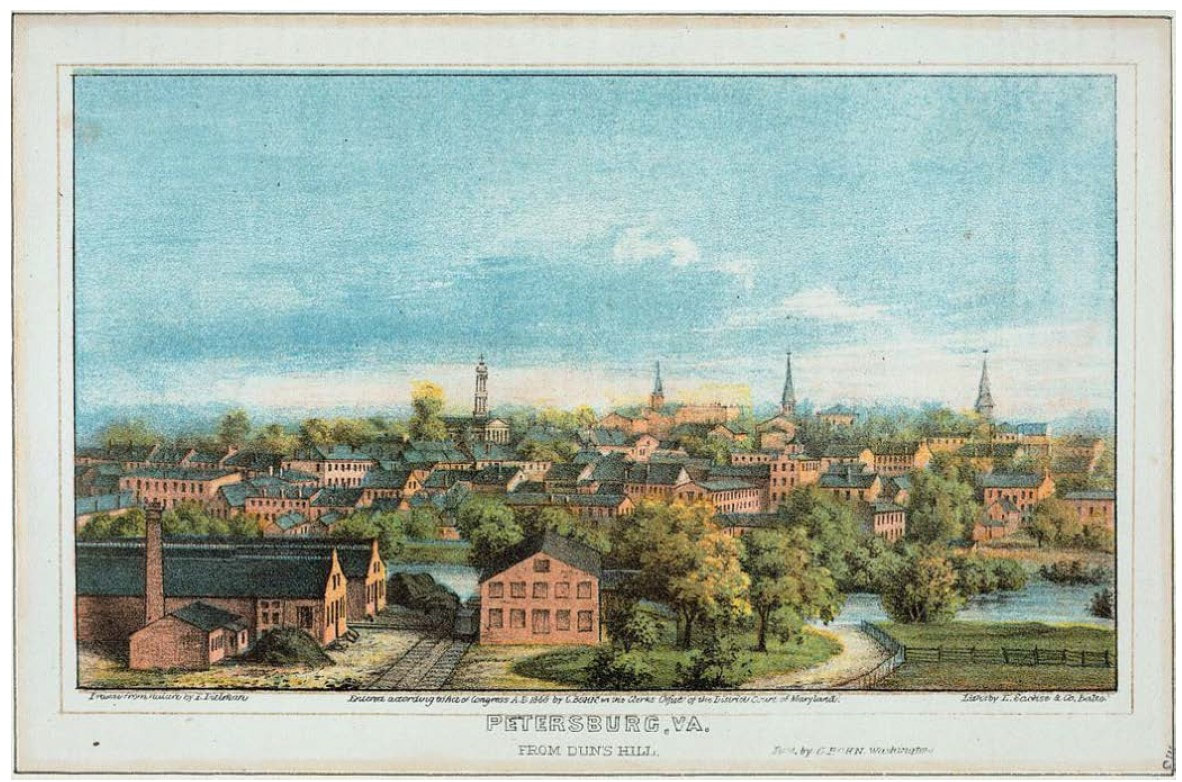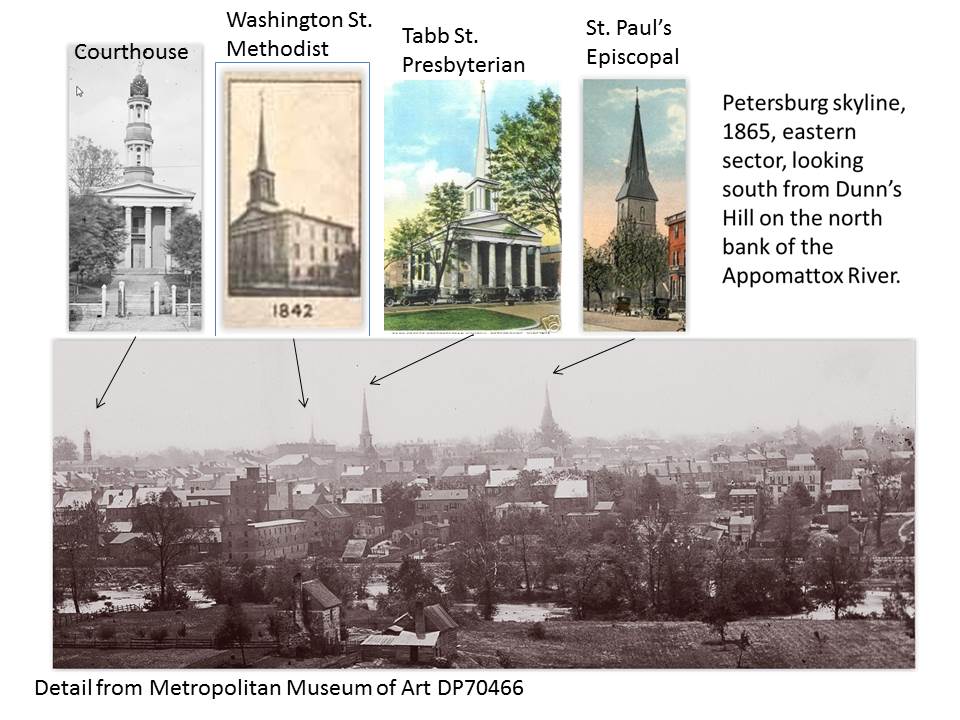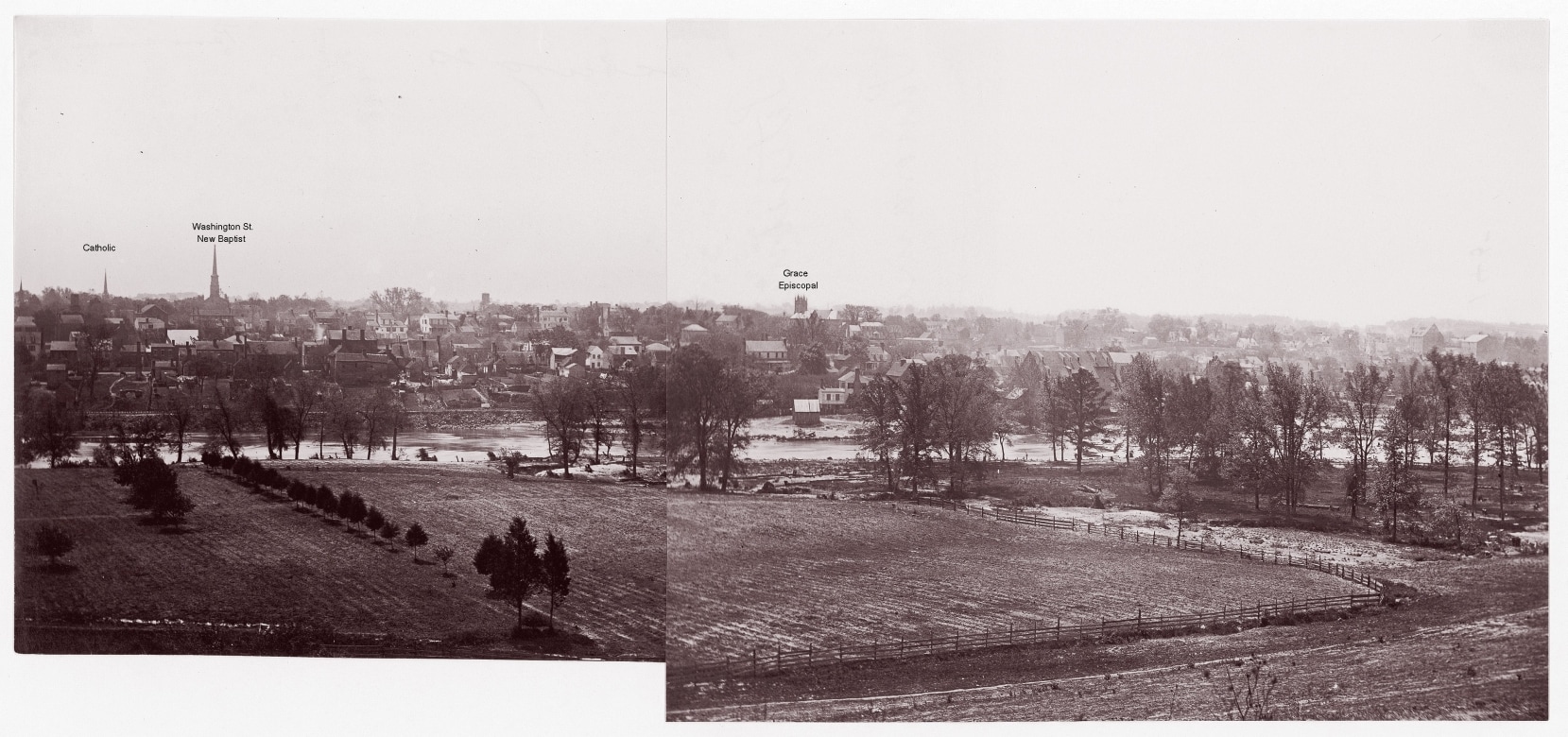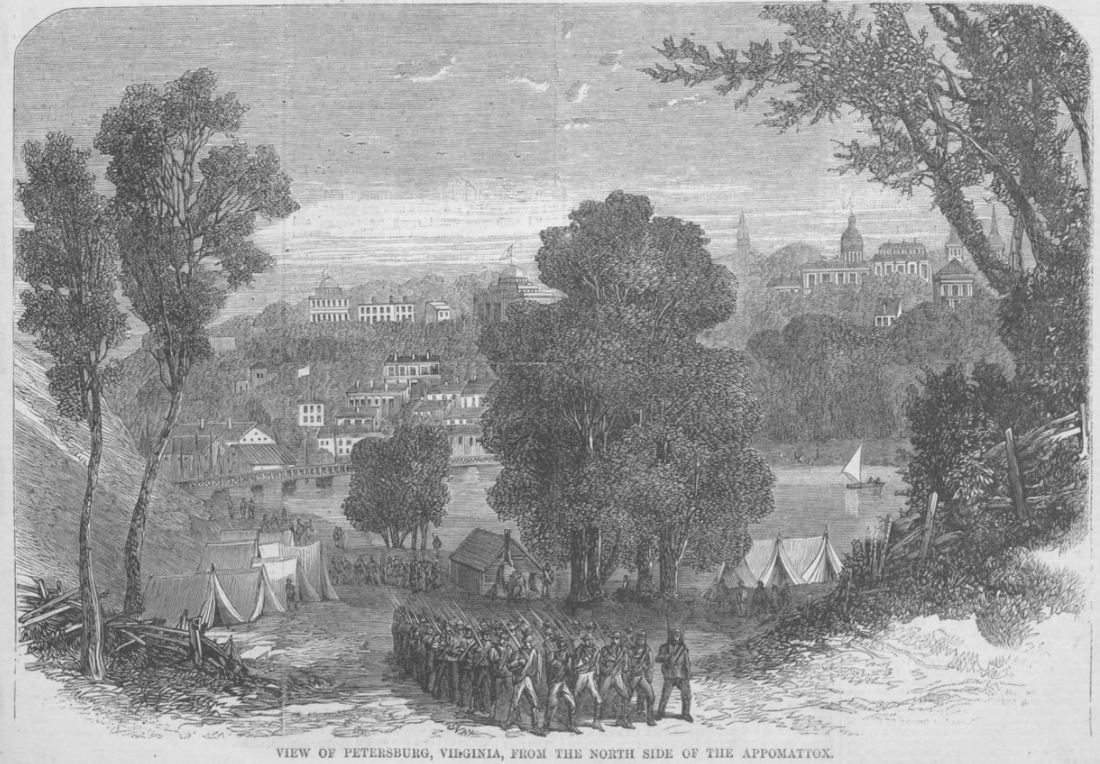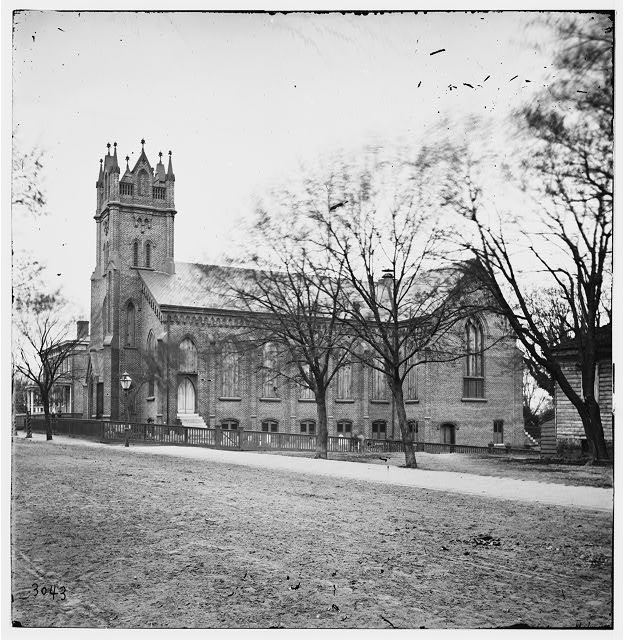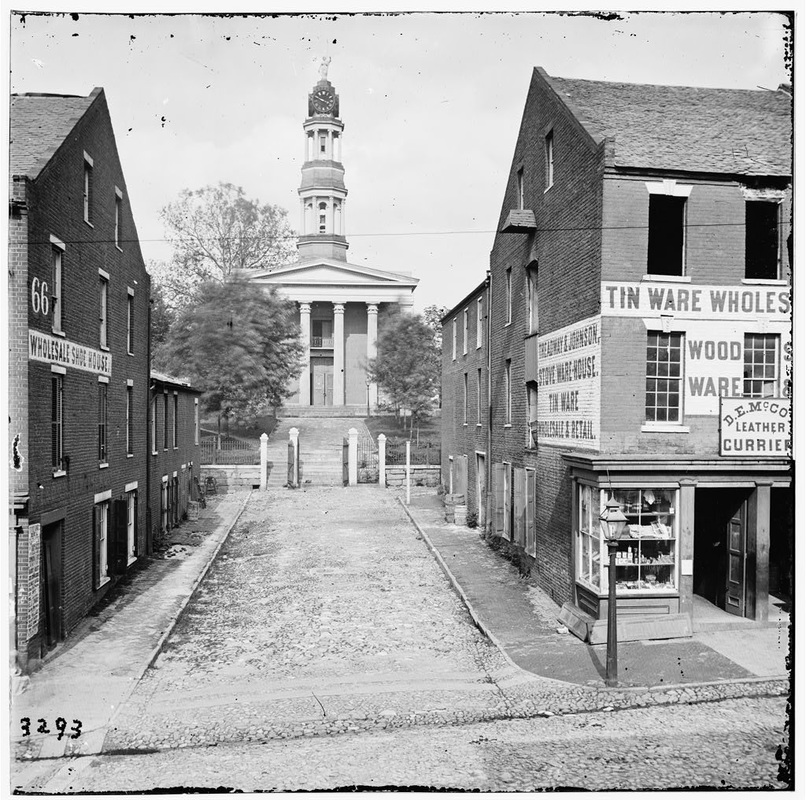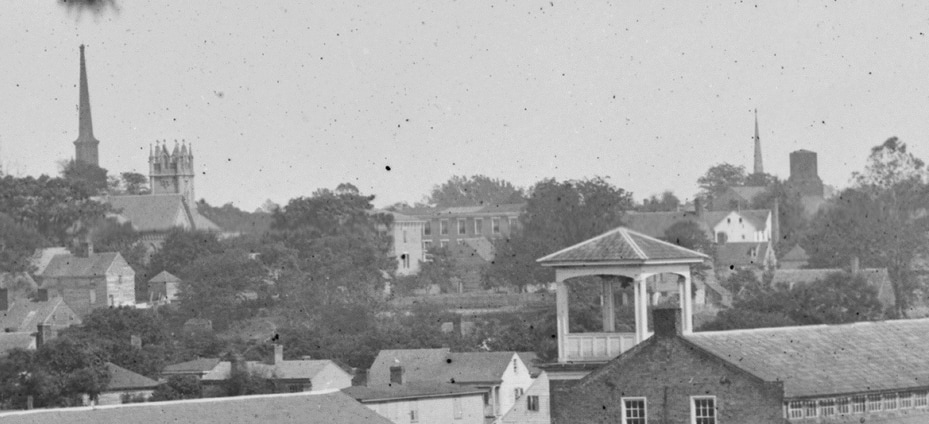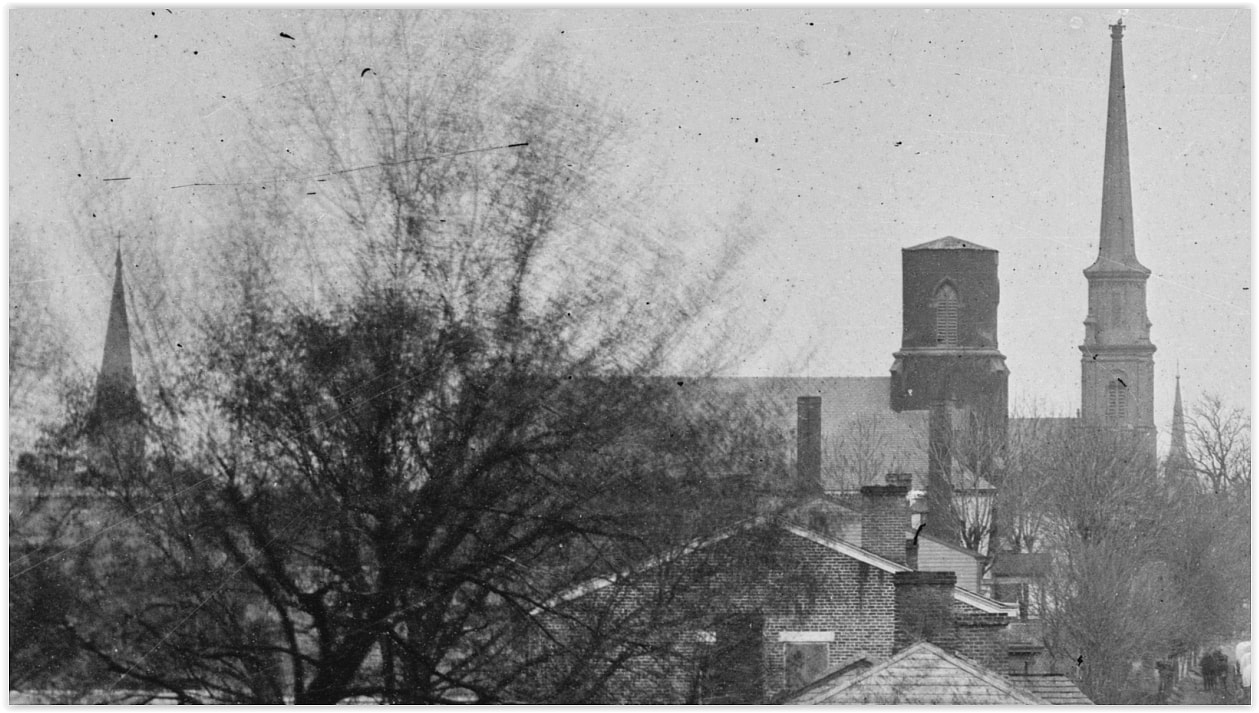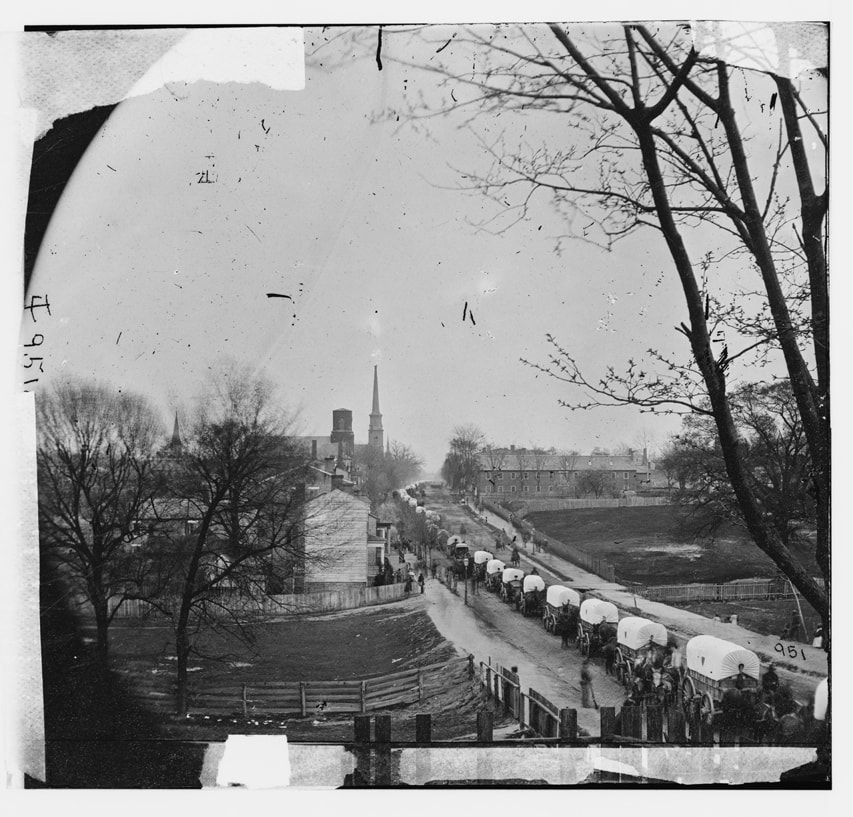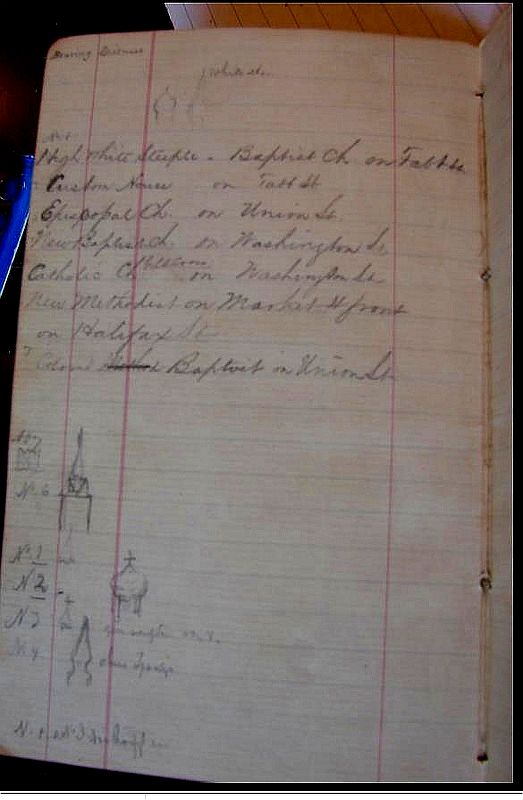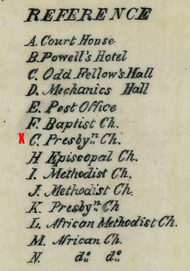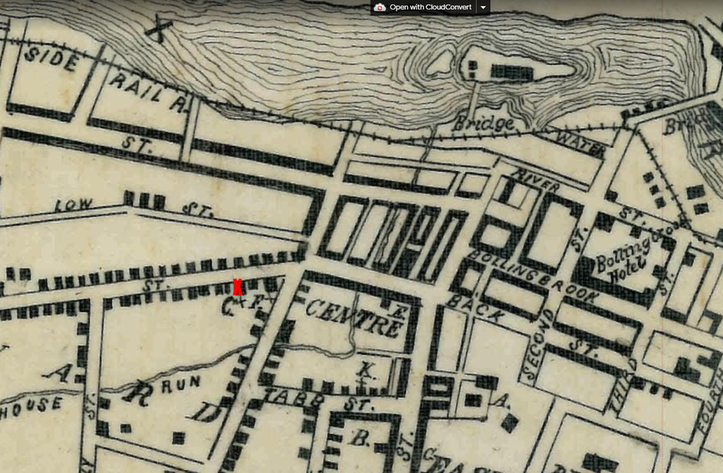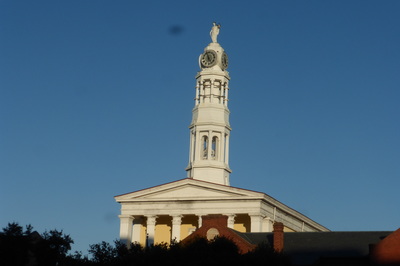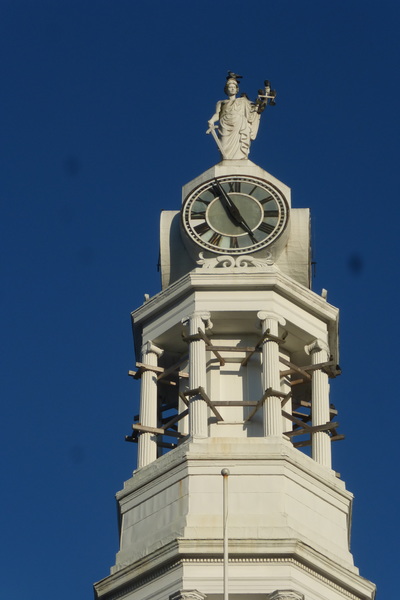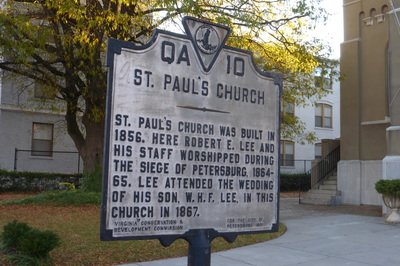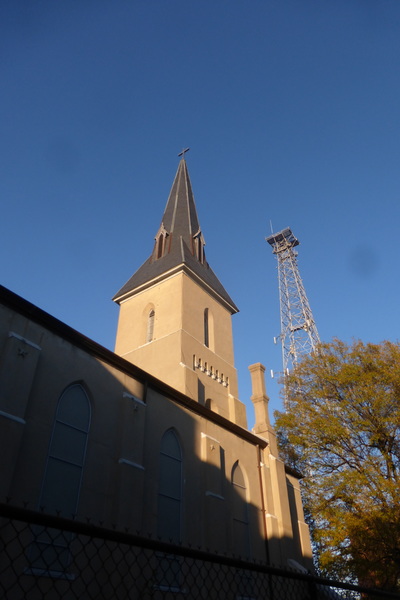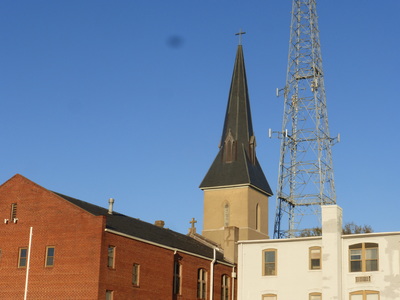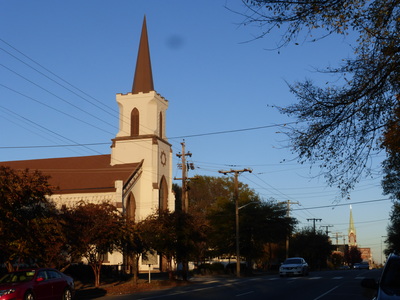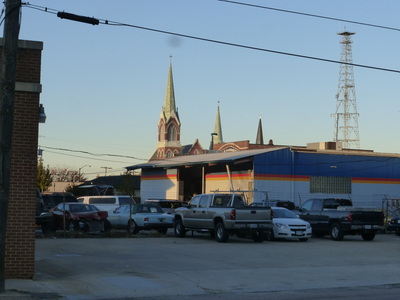STEEPLES of Petersburg
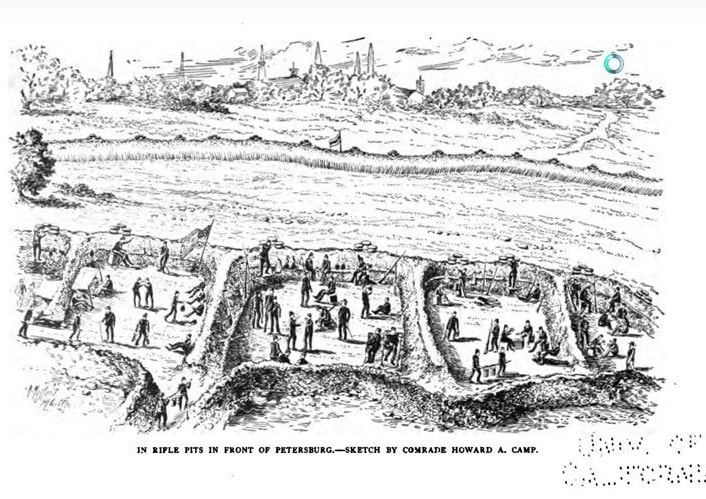
The city of Petersburg from U.S. lines east of the city. So many great details in this drawing! The story of the Twenty-first Regiment, Connecticut Volunteer Infantry, during the Civil War, 1861-1865. P 313. This earthwork was adjacent to the City Point & Petersburg Railroad. The inverted "Y" on the right would have been the junction of this railroad and the Norfolk & Petersburg R R.
War of the Rebellion: a compilation of the official ... ser.1:v.40:pt.1:Reports. p292...On learning the plan adopted I directed my principal assistant, Maj. John E. Weyss, to commence on the 9th an exact triangulation of the front of Petersburg, locating our own line of work as well as that of the enemy, and to take the immediate charge of the surveying party. My assistants, Messrs. Theilkuhl, Schumann, and Jacobsen aided him. The work was extended from the south of the Jerusalem plank road as far north as City Point. By this triangulation, performed under the fire of the enemy’s batteries and sharpshooters, the different spires and certain prominent buildings in Petersburg were accurately located, and having been kindly furnished by Professor Bache, Superintendent of the United States Coast Survey, with a copy of the beautiful map of that city and the Appomattox River prepared a few years ago in his department, I was able to combine the two [emphasis added], and thereby obtain an exact and connected map of the locality of our siege operations, covering the whole ground occupied by both armies....
N. MICHLER,
Major of Engineers, U. S. Army.
N. MICHLER,
Major of Engineers, U. S. Army.
STEEPLE BECOMES A SHOT TOWER Richmond Whig, 26 November 1862
SHOT WORKS in Petersburg
Mr. Joseph Doherty has commenced manufacture of shot in Petersburg, Va., and his works are now in successful operation. The steeple of the old Presbyterian Church has been converted into a shot tower, and the proprietor is prepared to drop from two to four thousand pounds per week.
SHOT WORKS in Petersburg
Mr. Joseph Doherty has commenced manufacture of shot in Petersburg, Va., and his works are now in successful operation. The steeple of the old Presbyterian Church has been converted into a shot tower, and the proprietor is prepared to drop from two to four thousand pounds per week.
A shot tower is used for the production of lead balls, primarily for use in shotguns (modern) or muskets (historical). Melted lead is run through a copper sieve of specified dimension and the extruded lead is dropped from the tower. Surface tension forms a ball as the lead drops and the balls are caught in water at the base of the tower. They were checked for roundness by rolling them on a slightly inclined plane, and imperfect examples were remelted. Nineteenth century shot towers still stand in Philadelphia and Baltimore as well as other places in the U.S. and around the world.
We don't know if this shot tower/truncated steeple was used in the Confederate war effort, or if it supplied civilian needs. The bullets used by both armies were formed by molding, but round balls are found in the military context along with the more common molded bullets.
A few modern photos
Last Update 06/16/2021

